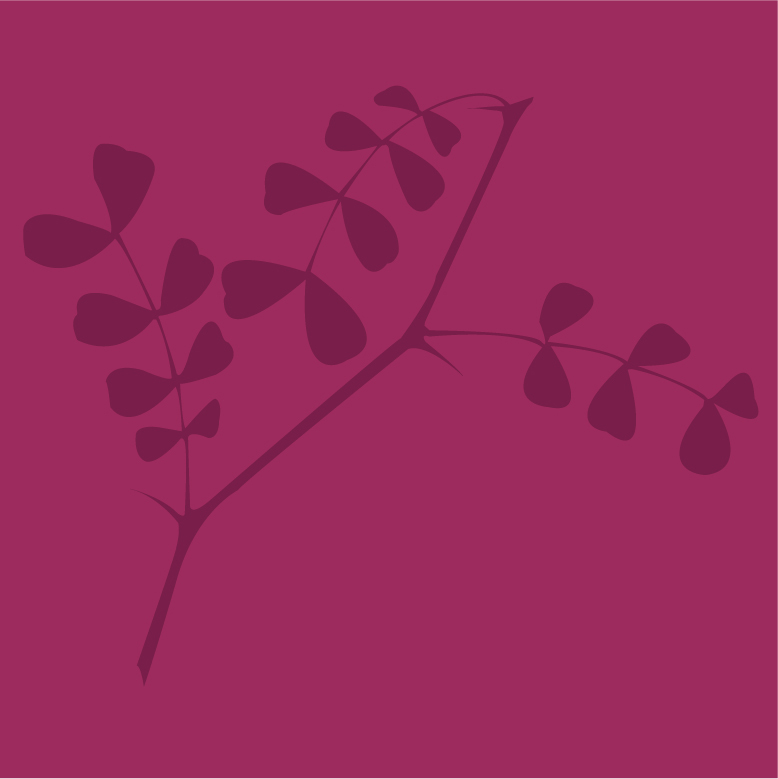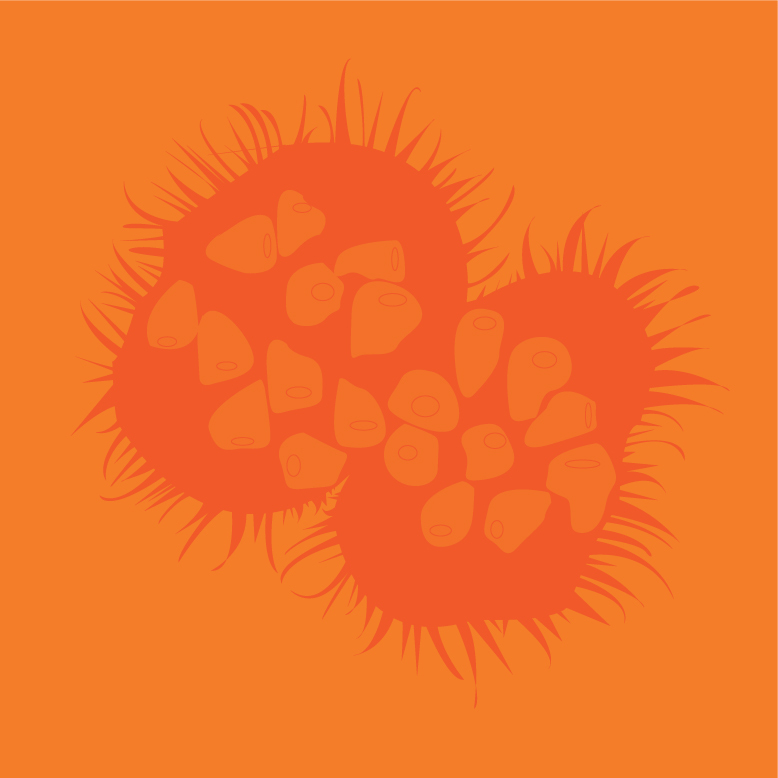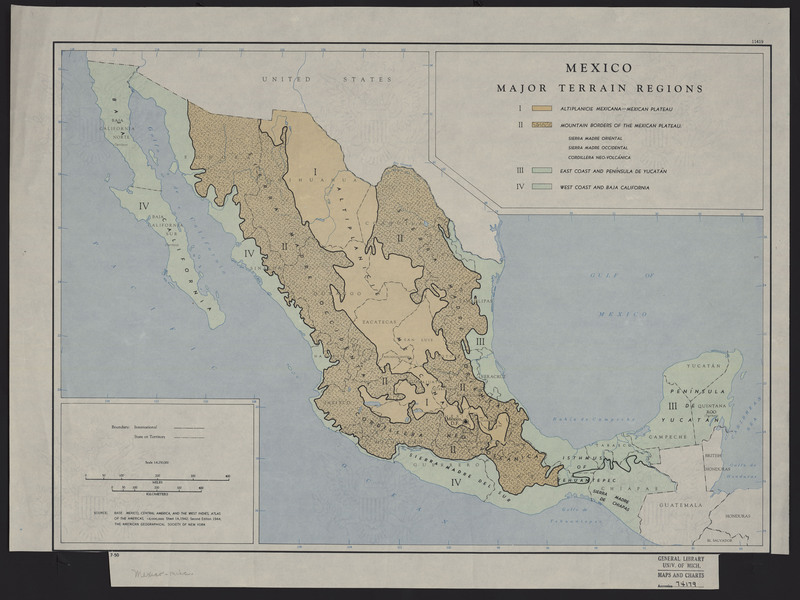Orange Colorants
Annatto
The annatto plant grows in South America, where it has a long history of being used to produce orange dye for fiber and fabric. The dye is extracted by grinding the dried seeds, or simmering them in water. Traditionally annatto seeds were pulped into a paste and used by native people of Central and South America as a body paint, as well as medicinally. Today annatto is used primarily as a food dye. In the United States dyes made from annatto are considered "natural," and show up in the ingredient lists of many orange colored natured food products.
Gold Leaf
"The craftsmen of the Middle Ages, unrestricted by laws protecting currency, made their gold leaf by hammering and hammering gold coins, transforming them into sheets so thin as to feel almost weightless. The slightest film of moisture will bind these delicate sheets to just about any surface. Glair, gum, honey, and plant juices were all used to stick gold leaf onto parchment" (Ball, 97-98). In antique maps, gold is used sparingly and for decoration, showing up in borders, illustrations and the rare significant detail. Gold is expensive, and when found on a map it is often an indication of the wealth of the map owner.
Ball, P., (2002), Bright Earth: Art and the Invention of Color, p. 97-98, New York: Farrar, Straus and Giroux.
More Red Colorants

Yellow Colorants




